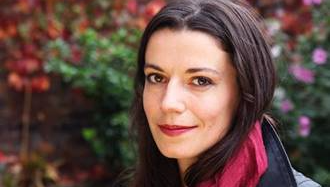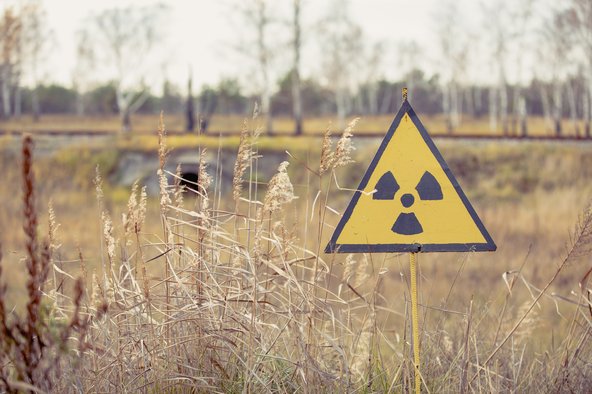Cal Flyn is an author and journalist from the Highlands of Scotland. Previously she has been a reporter for both The Sunday Times and The Daily Telegraph, and a contributing editor at The Week magazine. Cal holds a MA in Experimental Psychology from Lady Margaret Hall, Oxford. Her first book, Thicker Than Water, was a Times Book of the Year and dealt with the colonisation of Australia and questions of inherited guilt. Her second book Islands of Abandonment: Life in the Post-Human Landscape won the 2021 Sunday Times Charlotte Aitken Trust Young Writer of the Year Award and was shortlisted for a number of prizes including the Wainwright Prize for writing on global conservation, the British Academy Book Prize and the Baillie Gifford Prize for nonfiction.

As part of the research for my book Islands of Abandonment: Life in the Post-Human Landscape, I travelled to the Chernobyl Exclusion Zone to get a sense of the abandoned city of Pripyat and of the natural recovery in the zone more generally. At 1,600 square miles, it represents an area larger than Cornwall.
What I found there gave me a great deal of hope. Since 1986, there has been a huge amount of regeneration: 70 per cent of the zone is now forest; within a decade of the disaster, every animal population in the zone had at least doubled in number. Lynx, boar, deer, elk, beavers, eagle owls were all known to be regularly haunting the zone. Wolf numbers increased sevenfold. Brown bears were spotted there for the first time in more than a century.
This was the section of my book that people tended to respond to most strongly: there was something particularly emotive in the combination of horror and human tragedy, with the sense of almost divine forgiveness – a region where the worst had already happened had been transformed into a place of rare natural wonder.
Already, however, this chapter feels like a bittersweet souvenir from a more peaceful time. Russia invaded Ukraine on 24 February 2022; during the early hours of the invasion, thousands of Russian tanks and troops entered the exclusion zone from Belarus. Key safety personnel at the decommissioned nuclear plant spent the next week in frantic negotiations with Russian officers over maintaining safety procedures. One engineer said he had been forced to steal fuel for the back-up generators powering the cooling system after three days without electricity. (‘If we had lost power, it could have been catastrophic’, he later told the BBC.)

Russian troops left the zone a week later, but not before attracting heavy criticism for their recklessness in disturbing the site of the world’s worst nuclear disaster during their military incursion. The Ukrainians have released footage of trenches dug within the ‘Red Forest’, one of the most contaminated regions of the zone, and it is alleged that Russian troops suffered from radiation sickness after their heavy machinery churned up radioactive dust.
After initial spikes, the International Atomic Energy Agency has now confirmed that radioactivity levels in the zone have returned to normal. However, the Director General, Rafael Mariano Grossi, noted that ‘[he didn’t] know if we were very close to disaster, but the situation was absolutely abnormal and very, very dangerous’.
In terms of contamination, it seems we have avoided the worst-case scenario, but what this has demonstrated is how fragile some of these recoveries might be. So much of the remarkable flourishing we have seen in the Chernobyl Exclusion Zone has been dependent on Ukraine’s good management and stability in the region – a lack of disturbance allowing the radioactive particles to remain sealed up (relatively) safely under a mantle of vegetation.
Recovery can take hold, in other words, but when we are dealing with forms of pollution that will decay over a timescale of decades (or centuries, or thousands, or millions of years), human society is a remarkably unstable presence that cannot be relied upon to act, always, with responsible management at the forefront. Think of how much has changed in Britain – or in Europe – or the rest of the world – in only the last three centuries alone.
Sites like Chernobyl force us to consider such questions of the deep future. For, as we have seen, so much can change in the world in only a few short months.
This is what we have to consider when we deal with legacy contamination like nuclear waste or persistent organic pollutants (like dioxins and PCBs) that will last, effectively, for ever; we have to learn not only to live alongside them, safely, but to transmit the message to those of future generations. If nuclear material remains harmful to humans for upwards of 100,000 years, for example, how can we ensure its security? The Pyramids at Giza, for comparison, are only 4,500 years old.
There are a number of philosophies around how best to approach this problem. In Finland, a ‘nuclear necropolis’ is being built to secrete away spent nuclear fuel rods far below the surface of the Earth. The Onkalo ‘spent nuclear fuel repository’ is expected to accept canisters of nuclear waste for around a century before the entire facility is sealed and backfilled before its former entrance is disguised – the idea being that future generations will simply never realise it is there.
Some have taken a much more high-concept approach. In the USA, the semiotician Thomas Sebeok proposed the creation of an ‘Atomic Priesthood’ modelled on the Roman Catholic church, whose members would pass down knowledge of the danger via ceremonies, oral tradition and written (even sacred) documents. And still others have focused on the question of communication; how might we post warning signs that will outlast our constantly evolving languages? Think how difficult it is to understand Old English, for example – Beowulf is only 1000 years old, but already offers major comprehension issues to the reader. Nuclear semioticians are working hard on the dilemma – and must work on the assumption that our existing symbol for radiation danger (the nuclear trefoil) will fall from common usage within a blink of an eye, in comparison to the near-everlasting danger.
Sites like Chernobyl force us to consider such questions of the deep future. For, as we have seen, so much can change in the world in only a few short months.